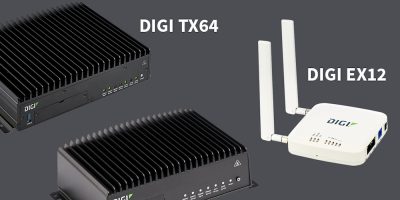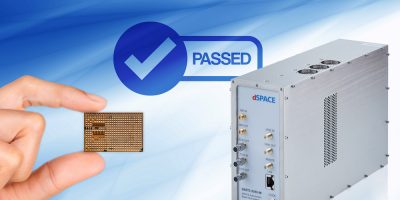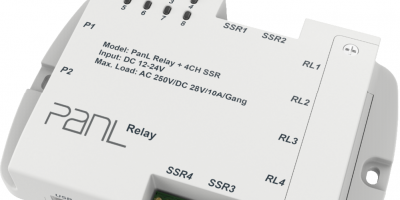Routers and software announced by Digi International address IoT connectivity and 5G for retail, digital signage, transportation and smart cities.
The new releases are the Digi TX54 and Digi TX64, the initial products in the TX line of transportation and intelligent traffic system routers. There is also the Digi EX12 cellular extender which joins the Digi EX15 for indoor signage, retail and food service applications.
Digi’s portfolio now has routers that include 5Ge / Gigabit LTE (Cat 18) radios, Band 71 and CBRS connectivity, 5G readiness, and are FirstNet Ready.
Supported devices can also use the Digi Core plug-in module, to adapt to the LTE standard.
Digi’s TX54, TX64 and EX12 are all built on Digi Accelerated Linux (DAL). This secure operating system adds multi-casting, expands routing protocols, and – critical for transportation applications – offers dual APN capabilities and supports dynamic DNS updates.
They also all share Edge Compute, which combined with the integral Python, allows users to add intelligence on the device. This can be from simple scripts to IoT applications.
They all also have Digi Remote Manager for centralised device deployment, monitoring and control. With Digi Remote Manager, organisations can automate firmware, software and configuration updates of all units in the field for asset tracking and compliance, including security protection. It is also available as an Android or iPhone mobile app.
Digi TrustFence is a built-in security framework, which protects internal and external I/O ports to prevent unwanted local intrusion. Digi TrustFence also provides data authentication and device identity management options. It uses the latest encryption protocols for data in motion and over-the-air (OTA) transmissions to ensure the integrity of data flowing across a network.
Designed for transportation, intelligent traffic system (ITS), and public safety applications, the Digi TX54 and Digi TX64 can be used in traffic systems for traffic monitoring and optimisation for connected and even self-driving vehicles, in the future. Dual cellular and dual Wi-Fi makes them suitable for on-transit-vehicle connectivity; eliminating network downtime with immediate cellular failover and providing simultaneous, firewalled passenger and administrator connectivity.
Additionally, the Digi TX64 with its dual Gigabit LTE (Cat 18) radios is ready for 5G as part of AT&T’s 5G rollout. This industrial computer has a Quad-core 1.9GHz processor, with added routing capabilities. It can be used for onsite camera monitoring, emergency response kits, and Wi-Fi for on-board transit applications, in addition to file streaming and storage.
The EX12 is Digi’s most affordable cellular extender for low to medium bandwidth applications, including business continuity, point of sale, and digital signage connectivity in retail and primary LTE connectivity in kiosks, ATMs, and lottery machines.
The TX54 and TX64 are available now. The EX12 will be available by this summer.







